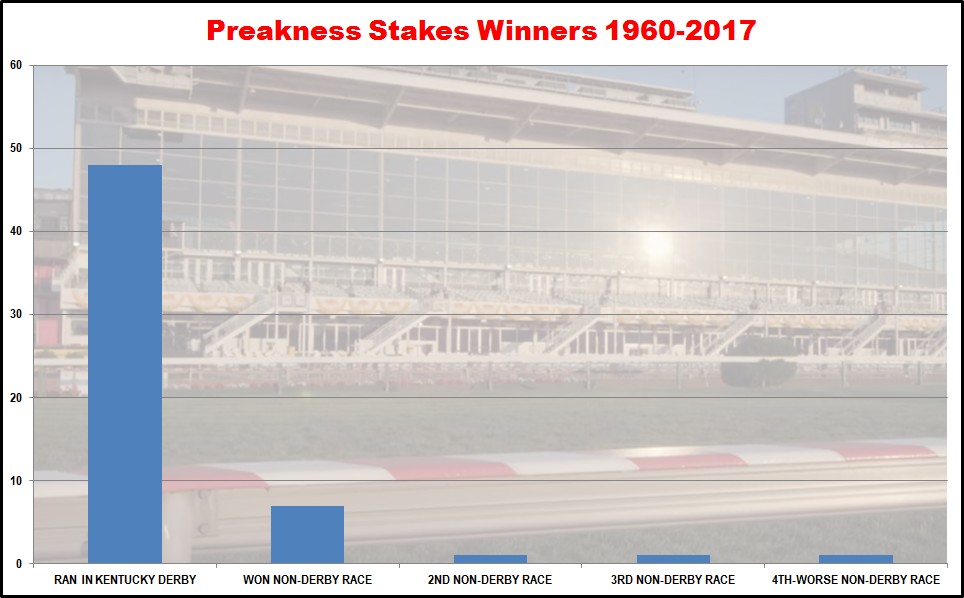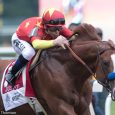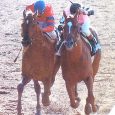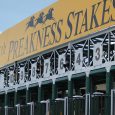Since 1960, just 10 of 279 non-Kentucky Derby starters have won the Preakness Stakes. That’s a 3.6 percent win rate, a 0.36 impact value (IV) and a 0.64 odds-based impact value (OBIV).
Dr. William Quirin popularized the concept of an impact value in “Winning at the Races: Computer Discoveries in Thoroughbred Handicapping,” which he calculated by “dividing the percentage of winners with a given characteristic by the percentage of starters with that characteristic.”
“An IV of 1.00 means that horses with a specific characteristic have won no more and no less than their fair share of races,” Dr. Quirin explained.
Similarly, an IV of greater than 1.00 denotes that a particular factor is producing more than its fair share of winners, while an IV under 1.00 means that it is producing less.
 The odds-based impact value is my own creation (many others have their own version) and is based not on field size, but on the average odds of the horses meeting the criteria of the study. The advantage of such an approach is that it better isolates the factor being tested by equalizing the winning chances of the horses that show it.
The odds-based impact value is my own creation (many others have their own version) and is based not on field size, but on the average odds of the horses meeting the criteria of the study. The advantage of such an approach is that it better isolates the factor being tested by equalizing the winning chances of the horses that show it.





